Time Crystals and the Infosys Award 2024
- Shubhayan Mukherjee

- Nov 19, 2024
- 2 min read
The Infosys Prize is one of the significant recognitions for Indian-origin researchers worldwide. This year, the Physical Sciences award went to Professor Vedika Khemani of Stanford University for her groundbreaking work on time crystals. Time crystals are a remarkable phenomenon in non-equilibrium quantum matter, and this recognition highlights their growing importance in understanding modern physics and exploring transformative applications.
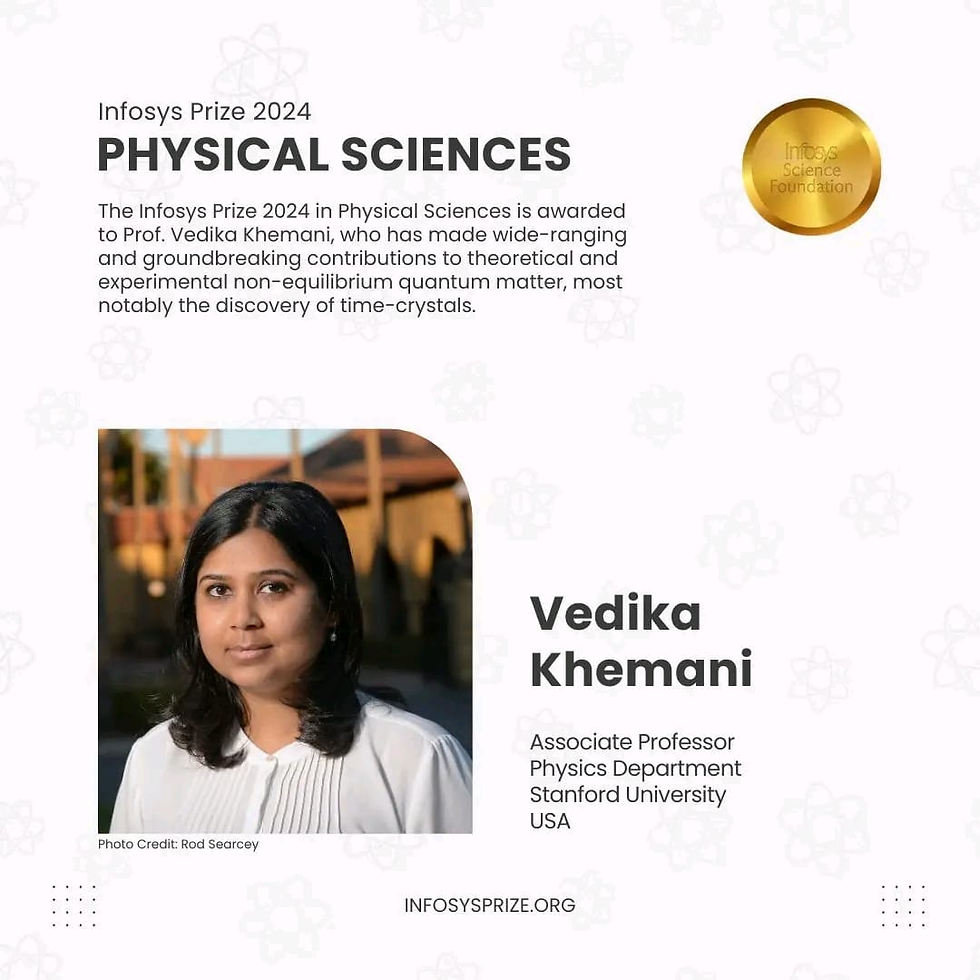
In my own research, I study crystallographic phase transitions, where spatial-translation symmetry breaks. Time crystals, on the other hand, involve the breaking of time-translation symmetry. I first came across this concept at a Materials Science Society meeting two years ago. I remember being captivated by the idea of a material that could oscillate perpetually in time without energy loss—it seemed like a concept straight out of science fiction. That initial exposure has since fueled my curiosity to learn more about this fascinating field.
Time crystals were first proposed by Frank Wilczek in 2012 as a novel phase of matter that could break time-translation symmetry. The first experimental confirmations came in 2017. Christopher Monroe’s group at the University of Maryland demonstrated time crystals using trapped ions, while Mikhail Lukin’s group at Harvard used nitrogen vacancy centers in diamonds. These experiments proved that time crystals could exhibit periodic oscillations in their quantum ground state, even under non-equilibrium conditions.
To appreciate time crystals, it’s helpful to understand symmetry. Conventional crystals break spatial-translation symmetry because their atomic arrangement is periodic in space but not uniform. However, they maintain time-translation symmetry, remaining static over time unless disturbed. Time crystals flip this idea. They break time-translation symmetry by oscillating periodically in time, even in their lowest-energy quantum state. These oscillations are sustained by quantum interactions, without energy dissipation, placing time crystals in a unique category of non-equilibrium quantum matter.
This distinction ties back to Noether’s theorem, which links symmetries to conservation laws. Where conventional crystals relate to momentum conservation through spatial periodicity, time crystals are tied to energy conservation under periodic time dynamics.
What makes time crystals so intriguing is their potential for real-world applications. In quantum computing and memory, for instance, their ability to maintain stable, coherent states with minimal energy loss makes them ideal for developing error-resistant qubits and reliable quantum storage. Their perpetual oscillatory behavior, sustained without external energy input, is a breakthrough for energy-efficient systems.
Moreover, time crystals offer a unique platform for exploring non-equilibrium physics and symmetry-breaking phenomena. They could also revolutionize advanced sensors and timing devices, enabling ultra-precise measurements and frequency generation. Their role in quantum error correction and topological quantum computing could pave the way for next-generation quantum technologies.
While time crystals complement, rather than replace, conventional systems, their ability to operate out of equilibrium and break time-translation symmetry opens up entirely new avenues in physics and technology. The recognition of Professor Khemani’s work underscores the significance of this field and inspires us to imagine how these extraordinary systems could shape the future.
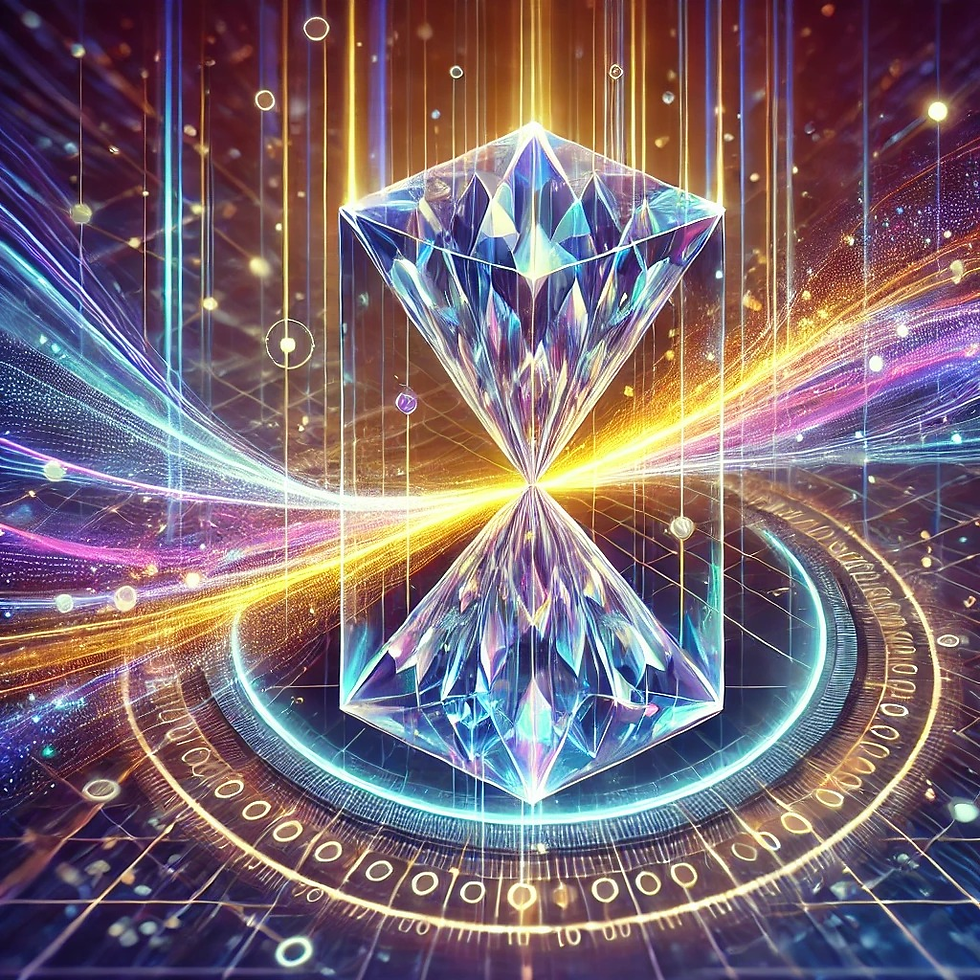

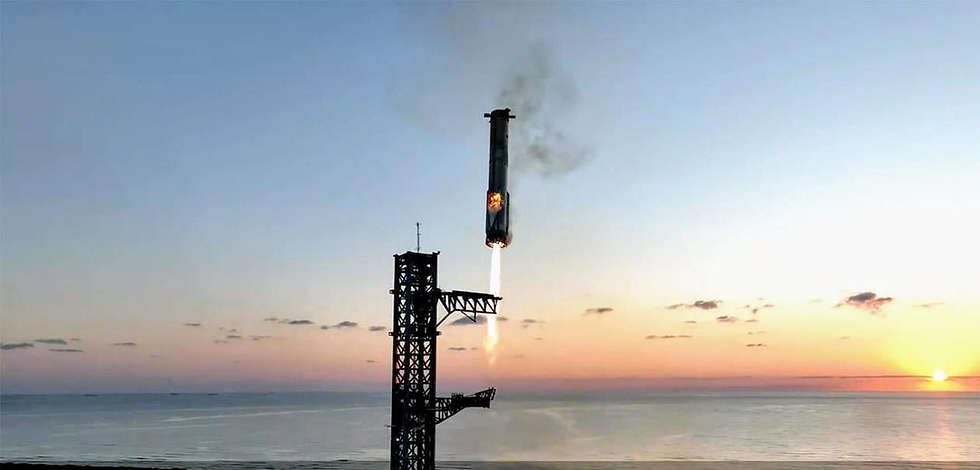
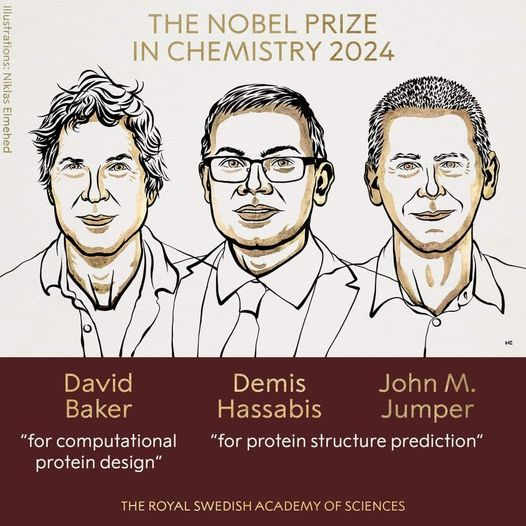
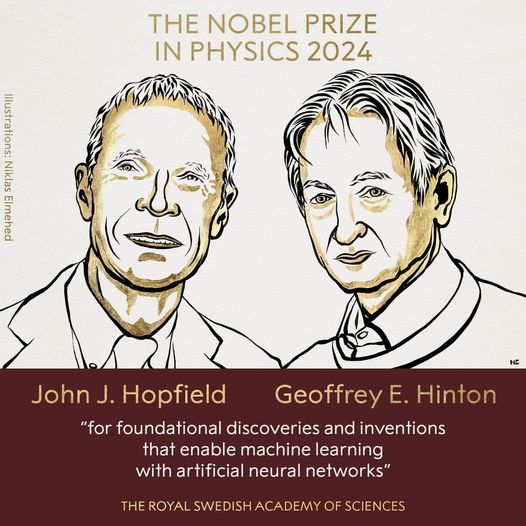
Comments